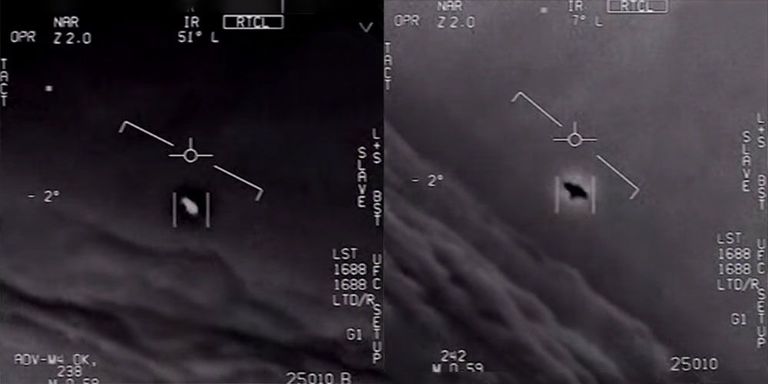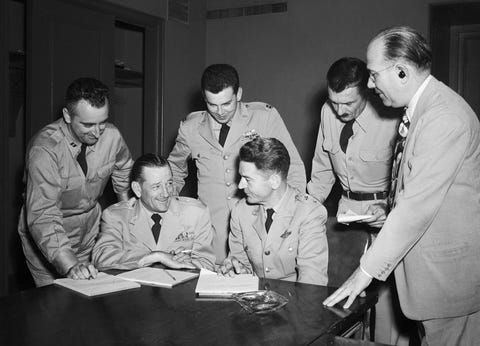A Former Military Strategist On Why the Government Is Cagey on UFO Matters
Who wants egg on their face?

Department of Defense
By Robert Bateman
Three days ago, The New York Times published what appeared to be a bombshell of a story. The report revealed that, from roughly 2007 through 2012, the Department of Defense ran a small program out of the Defense Intelligence Agency known as the Advanced Aerospace Threat Identification Program. The mission was, in short, to look into UFO reports and assess if any of them represented a threat to the United States. On the face of it, that looks like a big deal in anybody’s book. But was it really?
While wearing the uniform, I had the opportunity to participate in several very interesting, highly-classified efforts. Known as “Special Access Programs,” they are actually higher than Top Secret. Not only do you need a Top Secret Special Compartmentalized Information (TS/SCI) clearance, you also need to be vetted and then specifically given an in-briefing. You cannot even reveal the mere existence of the program itself, let alone anything from within the project. These are the sort of things that make headlines when they are revealed but which are often prosaic in origin or execution.
The fact is that the Department of Defense looks at a huge number of things, from the future effects of global warming to the games that Chinese strategists play as kids that may affect their modes of thinking. The extreme level of classification of many such studies often comes from one of two reasons. The first and most obvious is a desire to conceal a capability from any potential competitor or enemy. The second is, essentially, political: a desire not to be embarrassed, either by political leaders or the leaders of the various branches of the Department of Defense. In some cases, it’s both. This time, however, it appears to be only the latter.

July 30, 1952: Officers of the operations,technical and intelligence divisions of the USAF are shown at a news conference where they announced they are setting up a battery of more than 200 cameras in attempts to obtain data on the ’unidentified objects’ reported from various parts of the nation.
Getty
This is not the first time the Department of Defense has looked into the issue of UFOs. Indeed, its’s not even the second or third. In fact, the very term “Unidentified Flying Object” came from a USAF officer, Captain Edward Ruppelt, who was the first leader of the largest of these efforts known as “Project Blue Book.” The first of those studies started in 1947 and, under three different names (the last being Blue Book), officially lasted more than 20 years before finally shutting down in 1969.
Though Blue Book went through ups and downs over the years, it was pretty credible under the first director of the program, and over time they received and examined some 12,618 reports. (You can go see their declassified files yourself at the National Archives.) This being the digital age, you can access copies of everything online as well. If that is not enough, you can read Captain Ruppelt’s own summary of the project.
Believers and skeptics alike will probably both dive in on this, and not a few conspiracy theorists will latch onto the fact that the program was classified and funded through a part of the “secret” Department of Defense budget. And truth be told, if the numbers are to be believed, there has indeed been an uptick in UFO reporting over the past decade.
The openly acknowledged facts, however, suggest that my point about the reasoning for the secrecy was much more benign than some vast government cover-up of “the truth.” Spending only $22 million over five years really is small-beans by most measures. It suggests that this whole effort, averaging $4.4 million per year, was likely conducted by no more than a dozen people. The primary reason was likely classified to prevent political egg landing on anyone’s face.
Sure would be interesting to see what they found though.
Robert Bateman is a military historian and is a fellow at New America. He is a former military strategist.
From: Esquire US
No comments:
Post a Comment